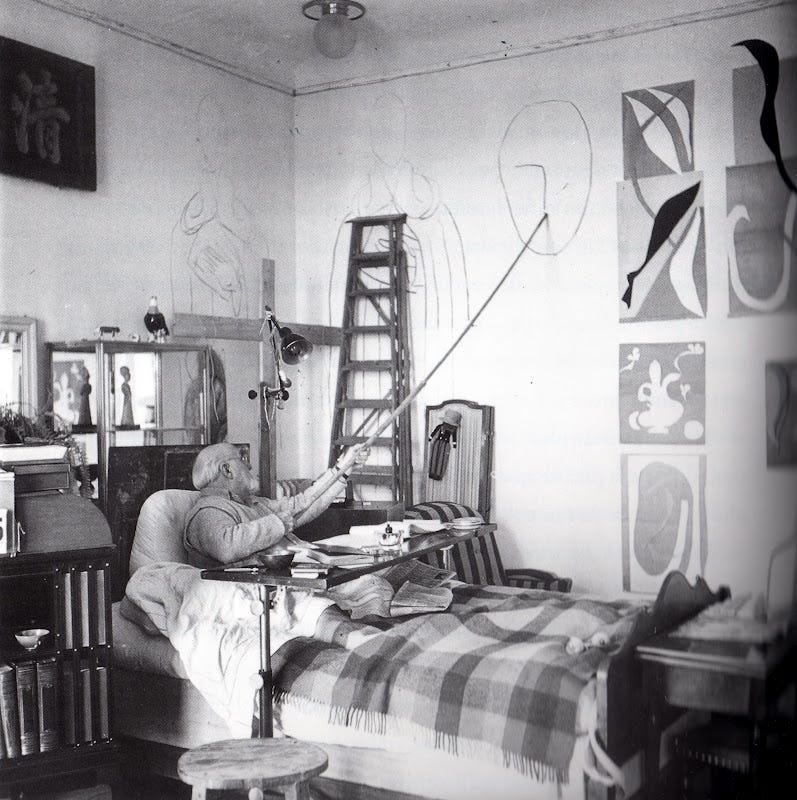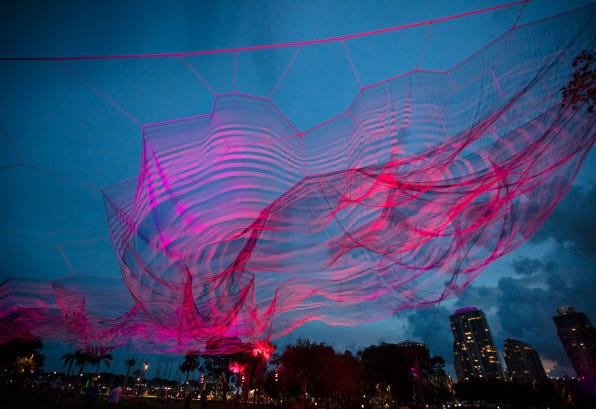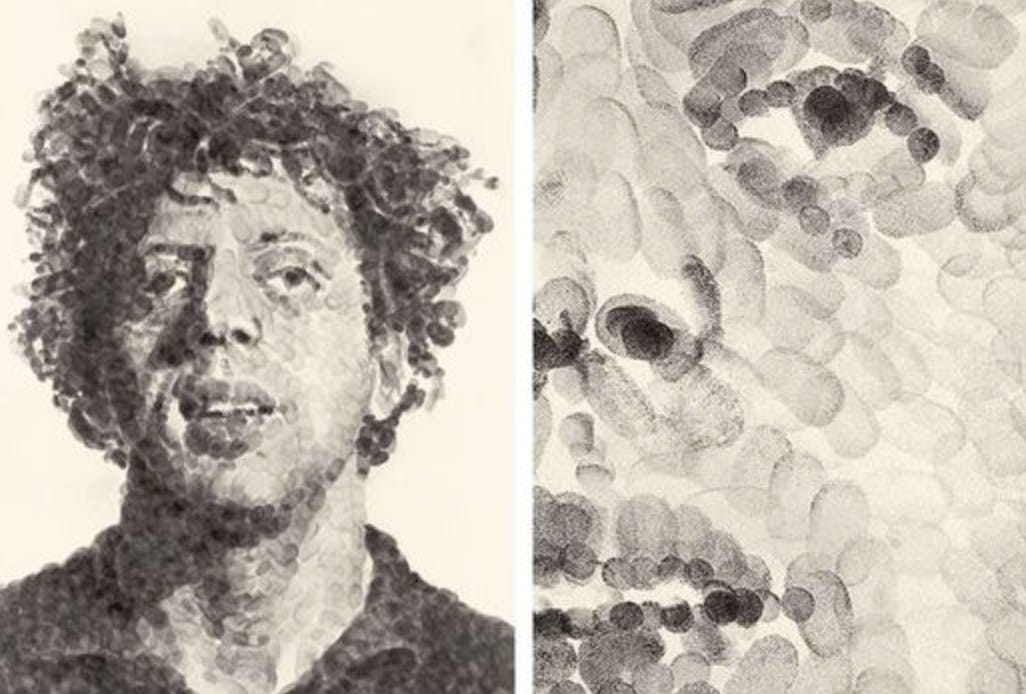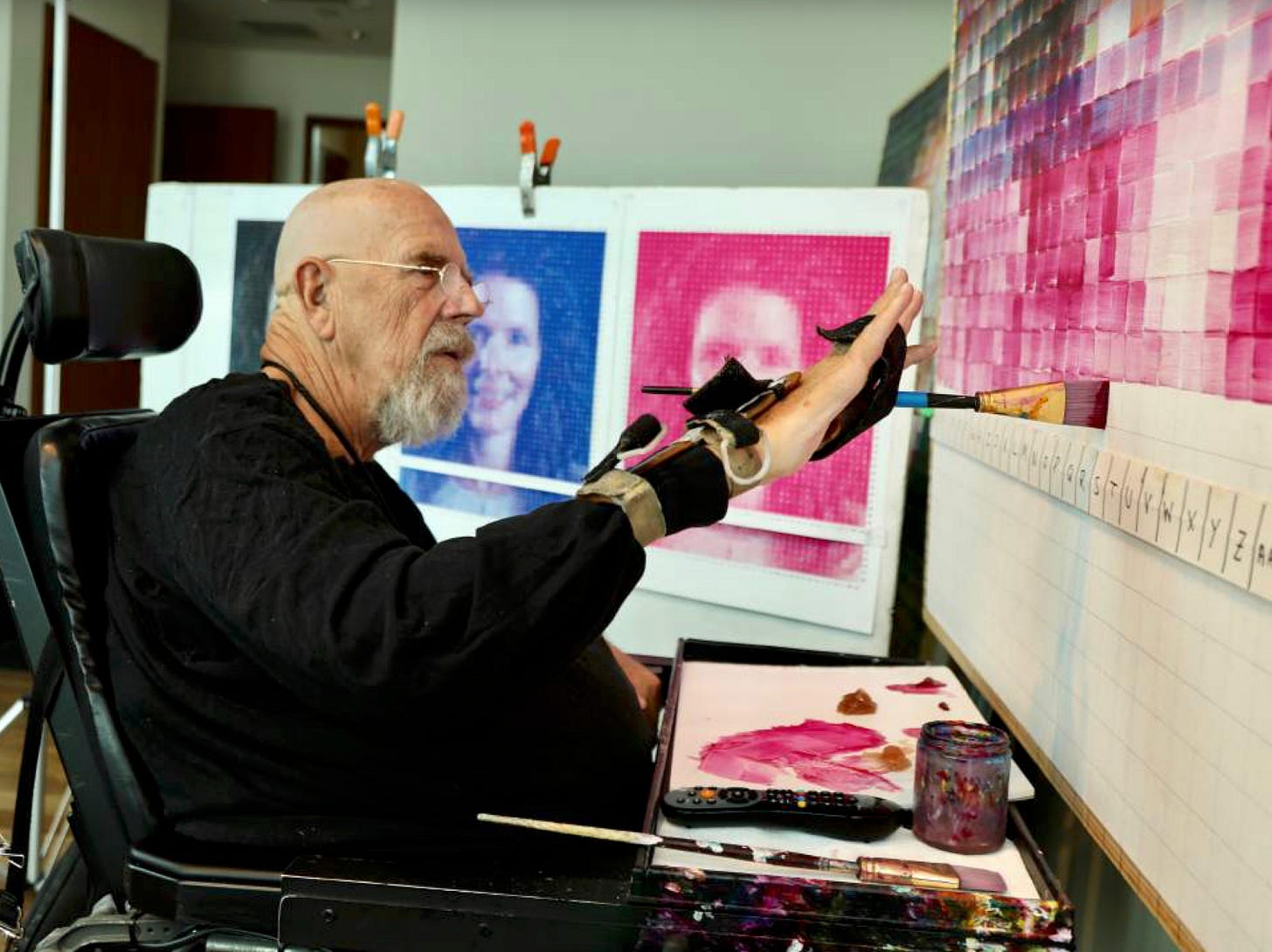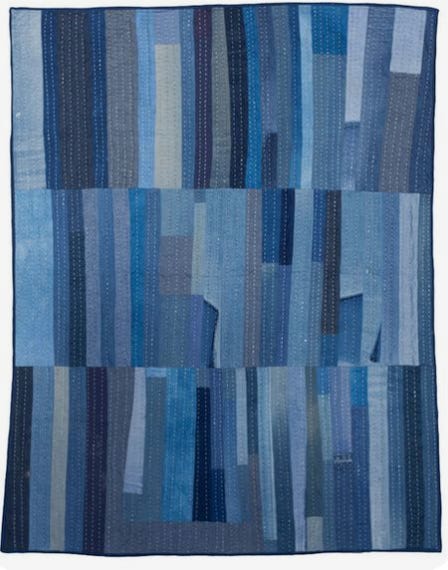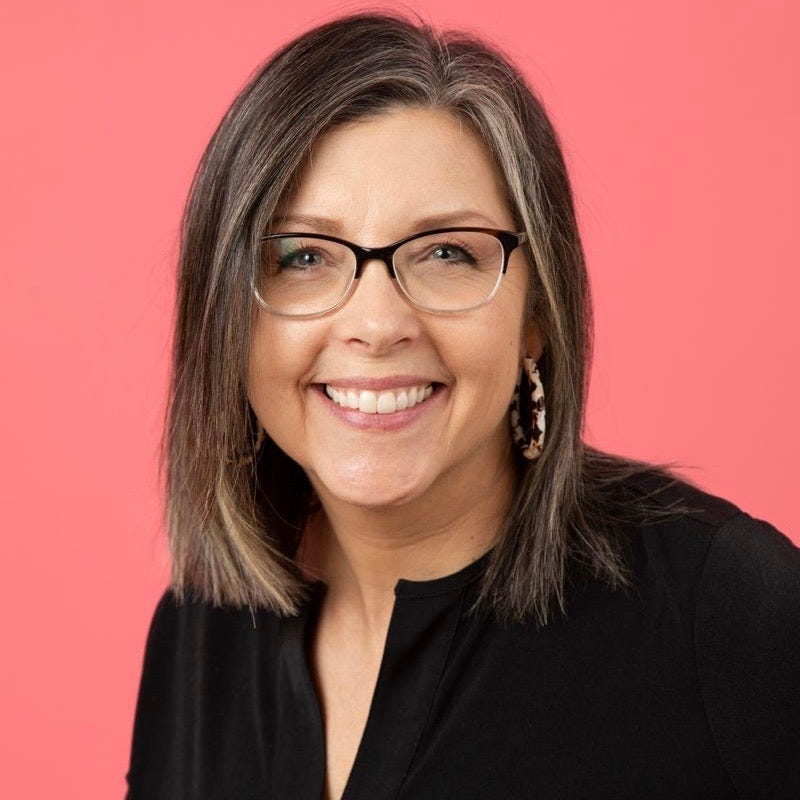Sought or Imposed, Limitations can take Flight
Self Portrait, Chuck Close
“For me, the most interesting thing is to back yourself into your own corner where no one else’s answers will fit. You will somehow have to come up with your own personal solutions to this problem that you have set for yourself because no one else’s answers are applicable.”
See
Self-imposed and external constraints often impact people. The artists below embraced their limitations, and their work and lives became better for it.
Henri Matisse
Henri Matisse drawing on a wall next to his bed, a few months before his death in 1954. Photo by Walter Carone.
Introduced to painting by his mother during his recovery from appendicitis, Matisse became a lifelong artist who had an insatiable need to create. As he aged, he could not continue painting and took up paper cutting. “Drawing with scissors,” Matisse produced some of his best-known artwork. His unwanted but quickly welcomed limitation was the key to an entirely new and innovative era of his art.
We can’t always choose our constraints, but we can always choose how we respond to them. Our response to limitations often defines us as artists.(Musicbed)
Janet Echelman
In 1997, Echelman won a Fulbright Senior Lectureship and traveled to India with the intention of giving painting exhibitions. Her artistic supplies were lost in transit to Mahabalipuram, so she began working with local bronze-casters but the material was heavy and too expensive for her budget. While watching fishermen bundling their nets, Echelman was inspired to take a new approach to sculpture, creating volumetric form without heavy, solid materials. In collaboration with the fishermen, Echelman created a series of netted sculptures, her "Bellbottoms" series. She went on to become an award-winning and prestigious artist with her airy net-like sculptures.
Chuck Close
'Phil Fingerprint / Random' with close-up detail (1979) Fingerprints with stamp-pad ink (40"x26") © Chuck Close
Chuck Close suffered many physical and learning disabilities while growing up. He believed in hard work and ‘considered subject matter almost incidental compared with the manner in which he worked and the limitations he established for himself.’ (NYT) In 1988, Close suffered partial paralysis resulting from a spinal stroke. He continued to paint 6+ hours a day by fastening a paintbrush to his hand and outfitting his studio with a lift to move his mammoth paintings into reach. Learn more about Close’s health at brainandlife.org.
Say
The urge to create is a force some cannot resist. Do you have something in your life that you are compelled to do? How do you make time for it? What constraints have you experienced with regard to this activity? How have you embraced them?
Do
Close said “For me, the most interesting thing is to back yourself into your own corner where no one else’s answers will fit. You will somehow have to come up with your own personal solutions to this problem that you have set for yourself because no one else’s answers are applicable.”
Create something with self-imposed limitations (‘back yourself into a corner.’)
Create a Blind contour.
Make a series of inchies.
Make a picture but limit your pallet to one color.
Try pointillism.
Watch this TED talk by artist Phil Hansen, who suffered irreversible nerve damage and opted to ‘Embrace the Shake.’
About the Artist:
Self Portrait, 2000 Chuck Close
Charles Thomas Close was an American painter, visual artist, and photographer who made massive-scale photorealist and abstract portraits of himself and others. Close also created photo portraits using a very large format camera.
Born: July 5, 1940, Monroe, WA
Died: August 19, 2021, Oceanside, NY
Please share your reflections with me by replying to this post and tagging my Wonder Wander Facebook or Instagram pages!



